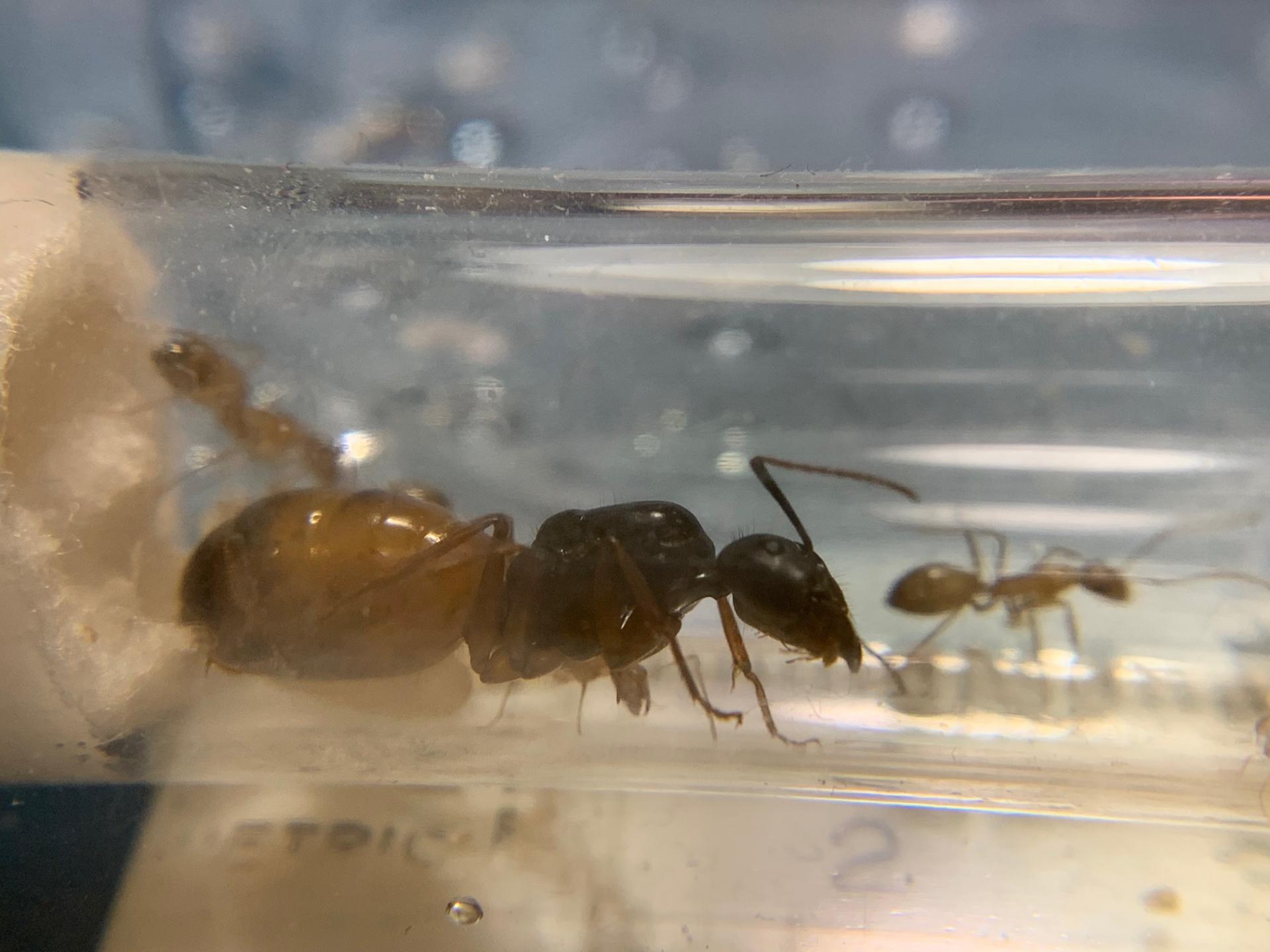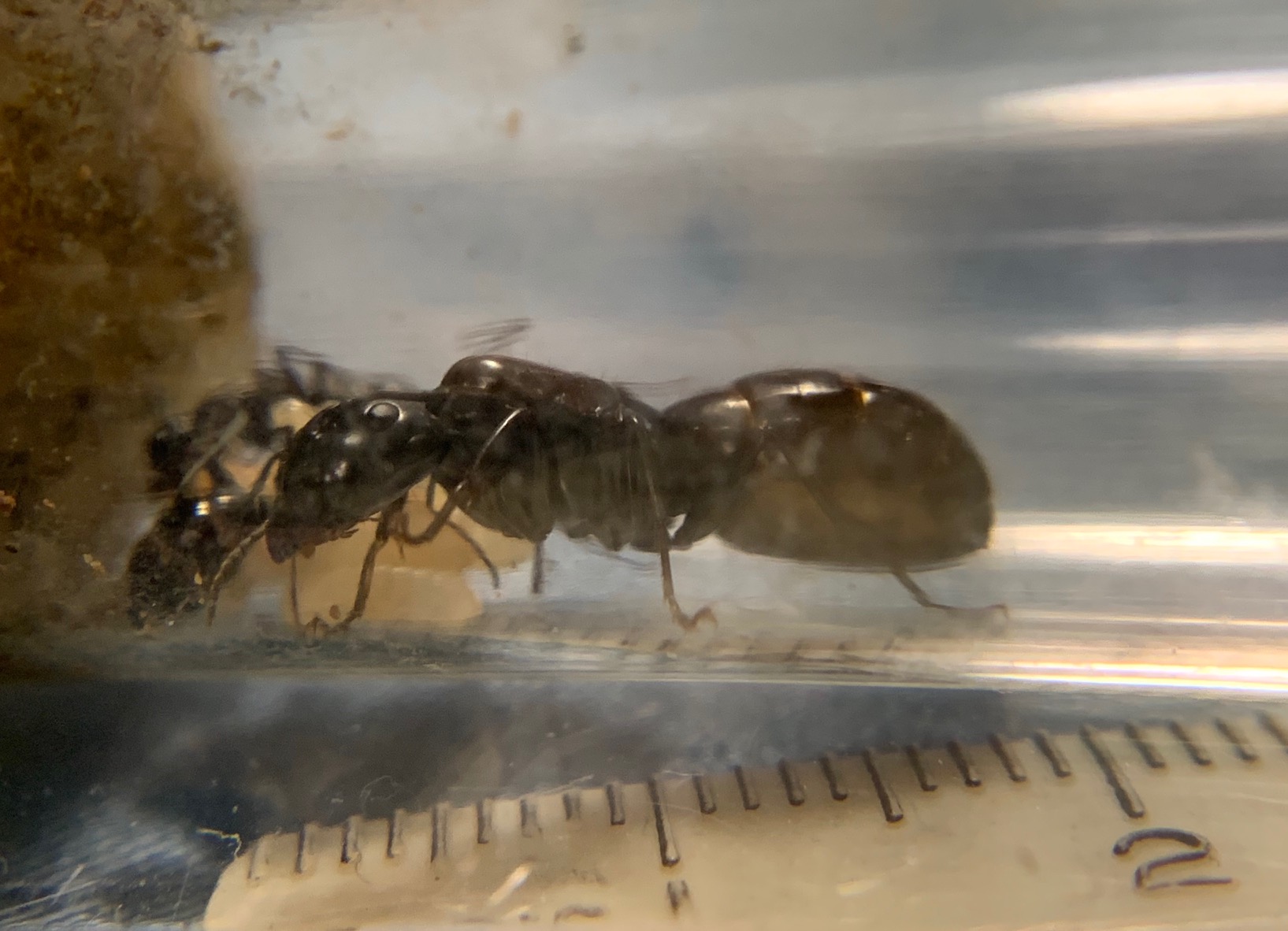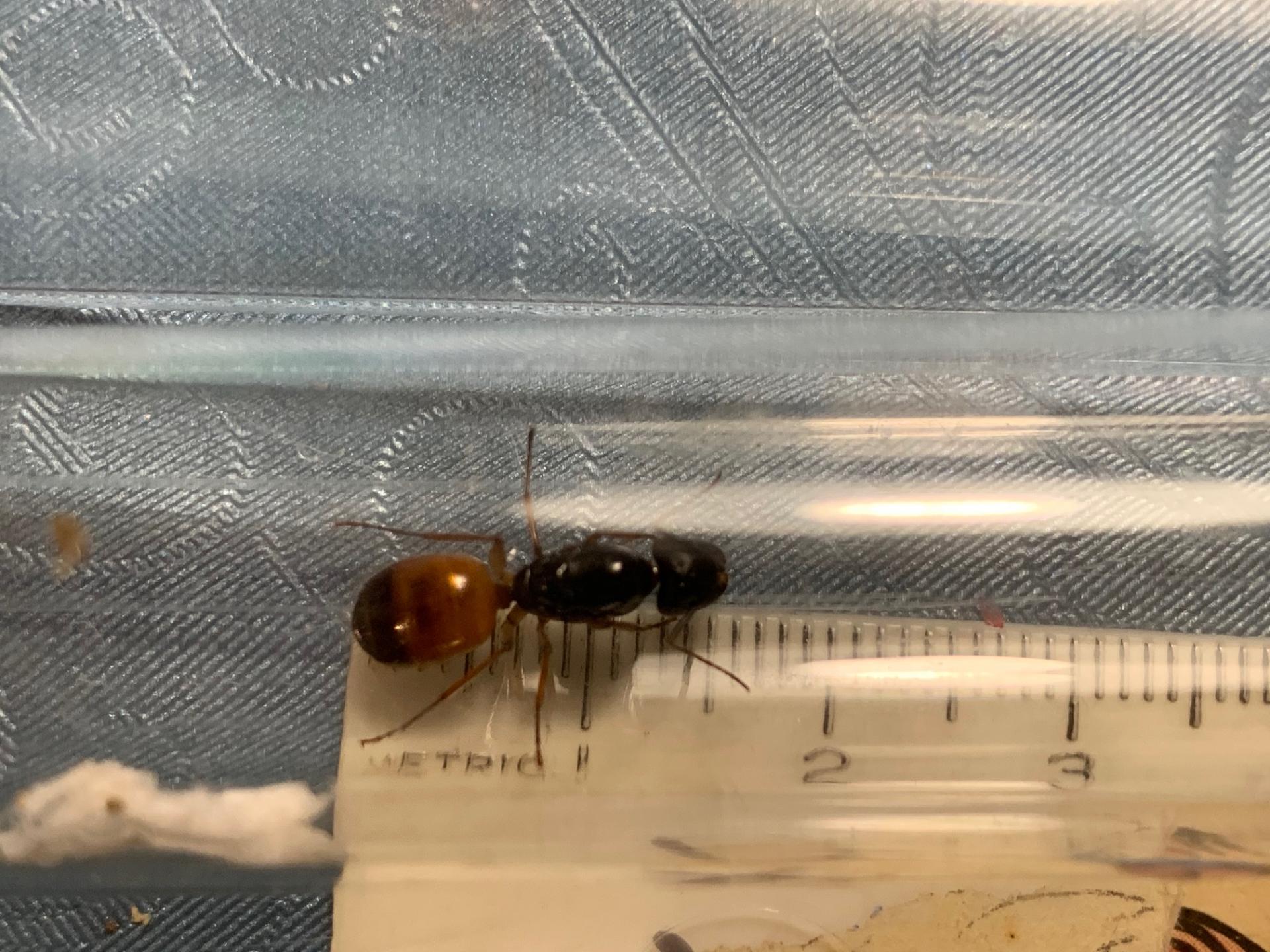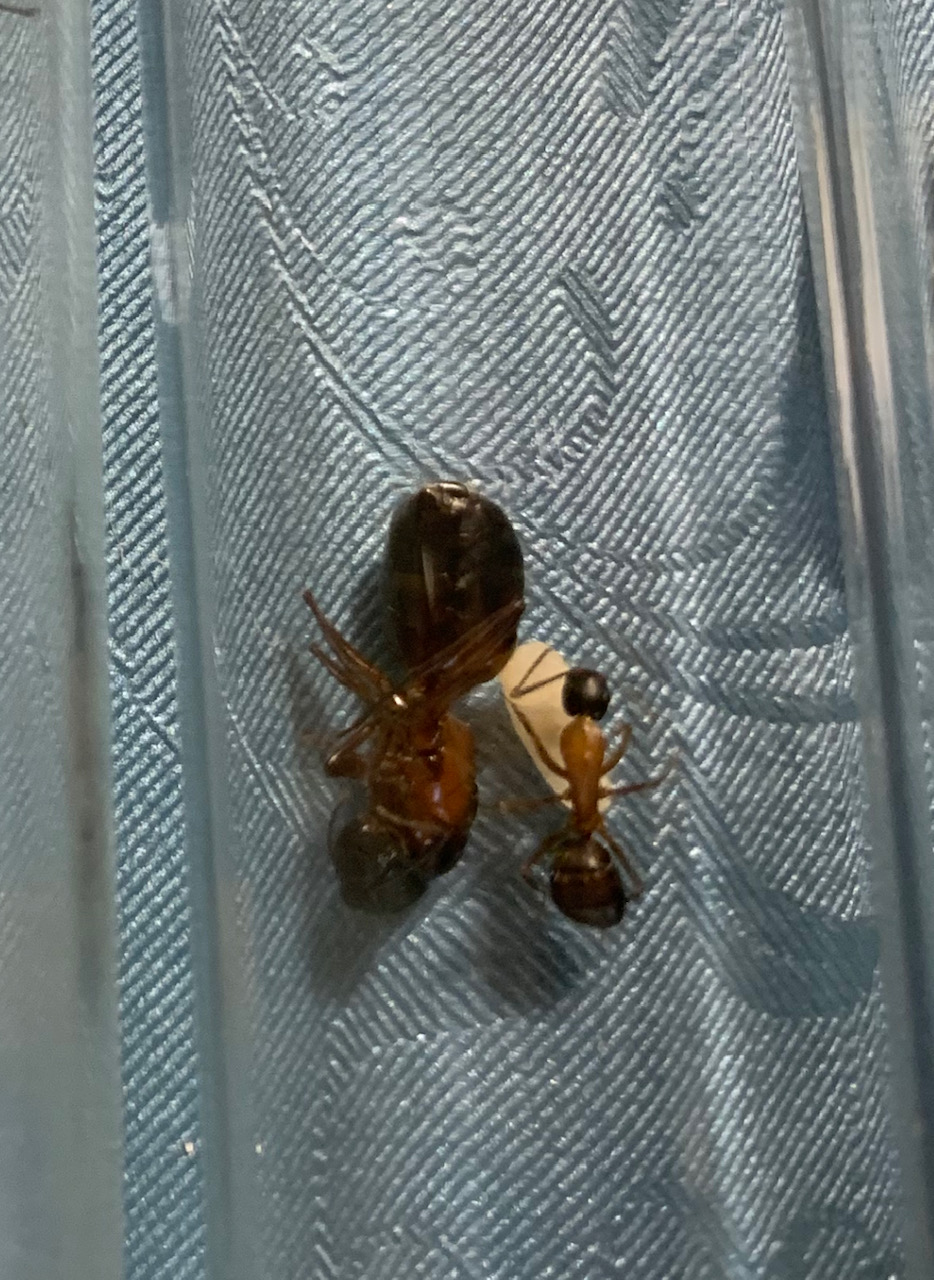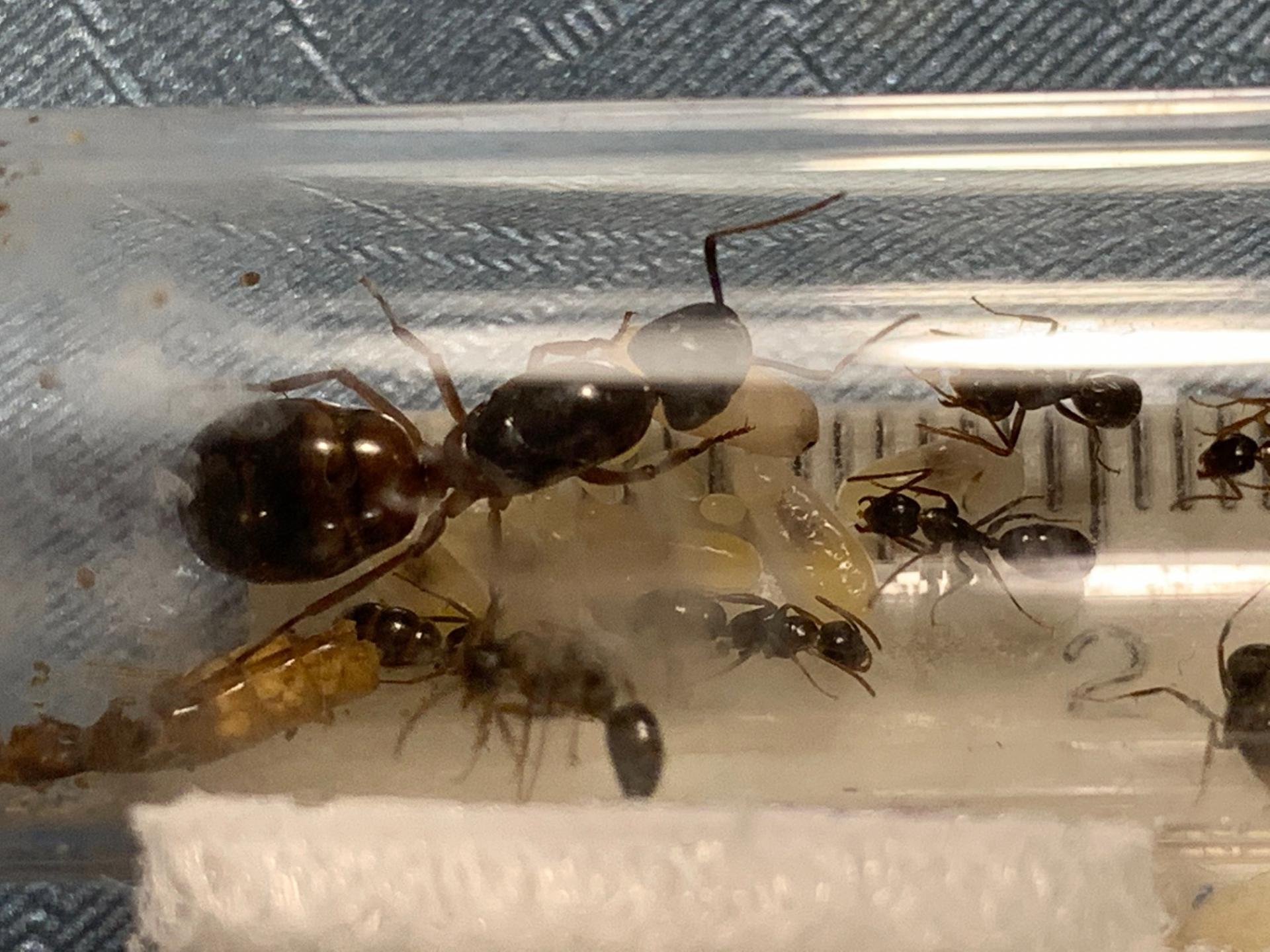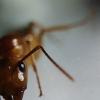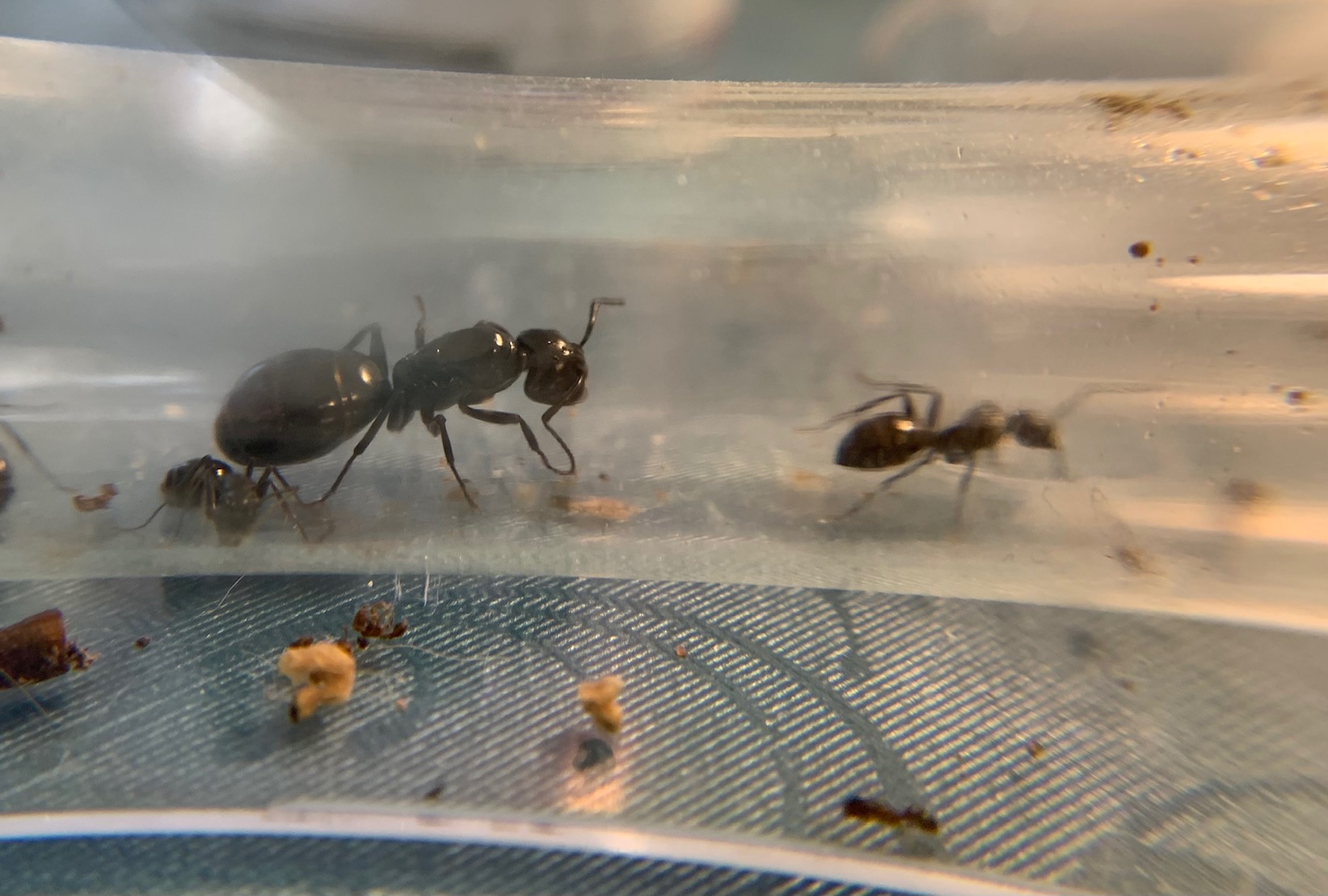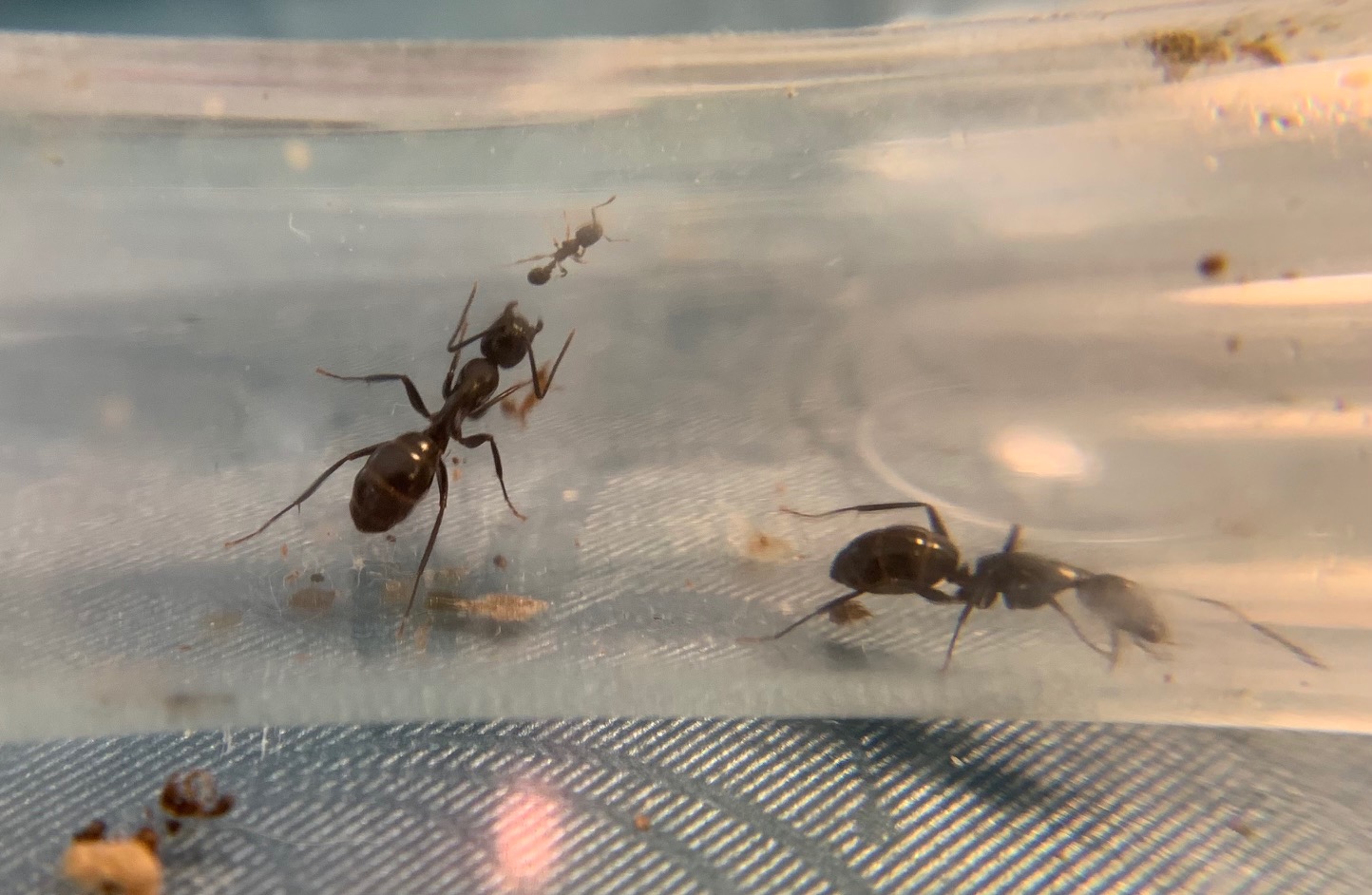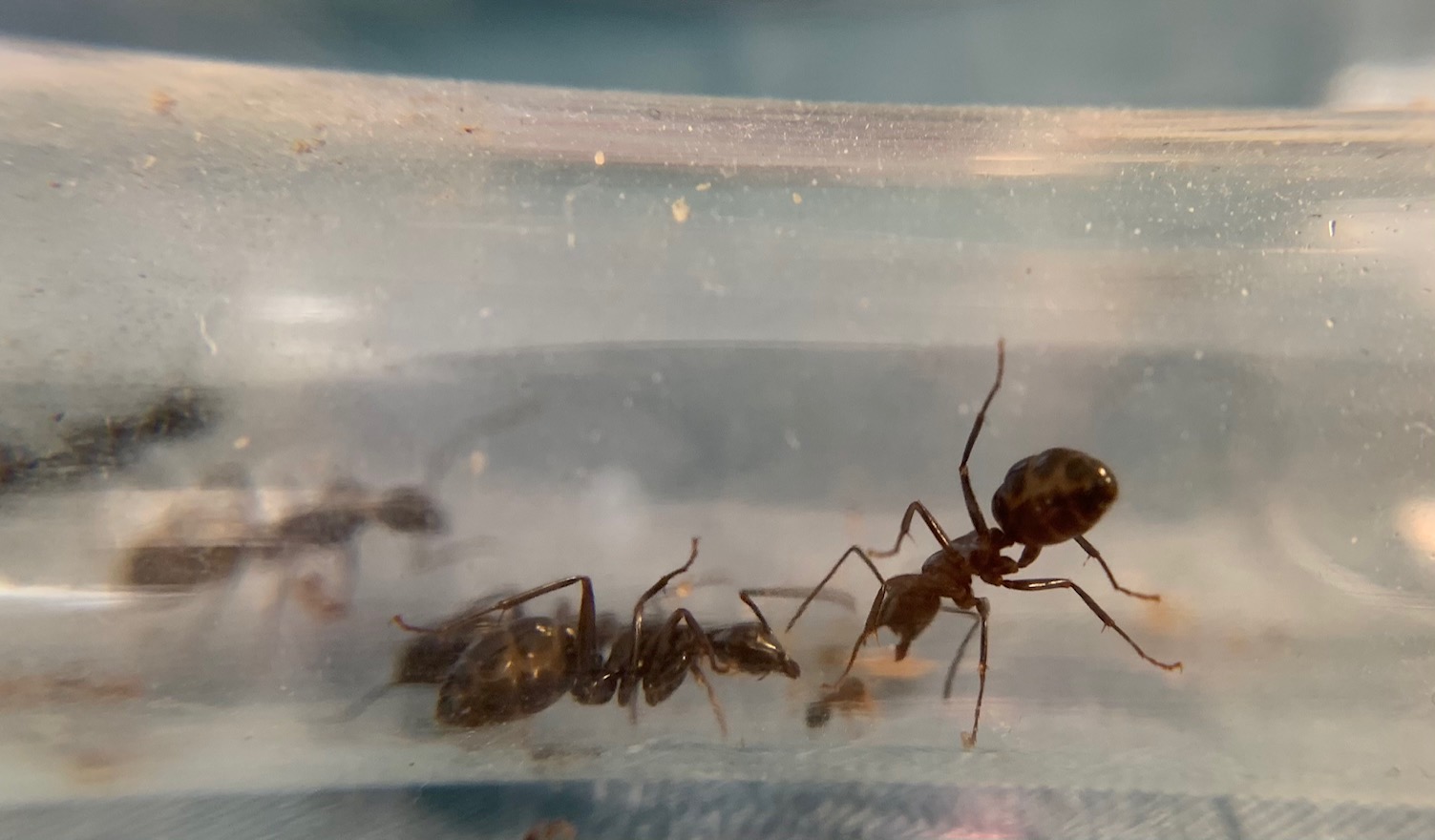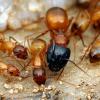2020.10.18 update (written next day). I've not updated this journal in a long time. (And remember C. fragilis journal is separate... not that I've updated that one in a while either....)
I am not heating any of these Camponotus, so I do think as temps drop toward autumn/winter, their productivity has as well. Come colder weather I will try to put them in the garage.
C. semi "dud" died ages ago, soon after my last entry. Not sure why. But she's gone and so are any hopes of a multi-species adoptive colony.
C. sansabeanus 1 "Mean Queen" ... hanging in there with 1 larva (not sure if it's hers or donated). Larva stays same size. Queen resolutely pushes out the dish I put protein on, every time. Tried giving her Sunburst in the tube yesterday and she poked the drop until its surface tension broke(!!) and we had a sticky mess in the tube. UGH. Someday I need to try giving her a donated pupa from sansa2.
C. sansabeanus 2... hanging in there with her nanitics. She's still incredibly nervous compared to sansa1. Which is weird as she seems to be doing so much better (we'll see how she does next year).
C. vicinus 1 ... If you read my Tetramorium journal, you know they escaped and invaded the Camponotus bins very recently. I thought this colony came out unscathed, but I found TWO dead workers. Possibly delayed effects of Tetramorium venom? Otherwise mostly healthy but their tube is drying out and they haven't moved to their fresher tube.
C. vicinus 2 ... "Bad Luck" queen. After the Tetramorium battle, I found one of the three surviving nanitics twitching and dying. So this queen has lost 2 out of 4 nanitics! She's continuing her streak of meh fortunes. She has a couple brood still.
C. vicinus dud ... (Did I even log when I got her? Came as a freebie.) No sign of any eggs or anything, but I fed her Sunburst yesterday. I occasionally give protein too. Her companion dud Novomessor actually turned out to not be a dud. I had been keeping their tubes side by side, but Novo queen gets upgrade to heated spot.
C. quercicola. If you missed the "Attack on Titan" account in the Tetramorium journal, here are a few photos from that skirmish (the rest are in the Tetramorium journal). NO cola casualties. I guess they are just SO big they have a distinct advantage if fighting only a couple Tetramorium at a time.
Edited by OhNoNotAgain, October 19 2020 - 9:33 AM.
Past & Present
Veromessor pergandei, andrei, stoddardi; Novomessor cockerelli
Camponotus fragilis, Camponotus sansabeanus (inactive), vicinus, laevigatus/quercicola, CA02
Pogonomyrmex subnitidus, P. californicus (inactive)
Liometopum occidentale (inactive); Prenolepis imparis; Myrmecocystus mexicanus (inactive); Tetramorium sp. (inactive); Lasius sp.
Termites: Zootermopsis angusticollis, and a box of drywood termites that can't be seen
Isopods: (most no longer keeping) A. gestroi, granulatum, kluugi, maculatum, vulgare; C. murina; P. hoffmannseggi, P. haasi, P. ornatus; V. parvus, P. pruinosus, T. tomentosa
Spoods: (no longer keeping) Phidippus sp., other



